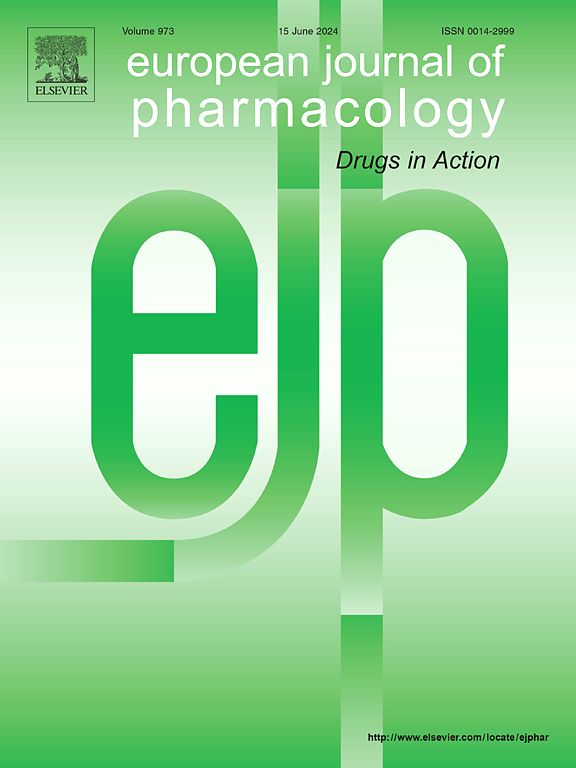Nitrous oxide increases peripheral blood flow and decreases plasma adrenaline and noradrenaline concentrations in human volunteers: An in vivo nonrandomized clinical and in vitro chromaffin cell culture study
IF 4.2
3区 医学
Q1 PHARMACOLOGY & PHARMACY
引用次数: 0
Abstract
Our understanding of the effects of nitrous oxide (N2O) on the peripheral circulation is incomplete. Therefore, we investigated its effects on peripheral blood flow, skin temperature, and plasma adrenaline (AD) and noradrenaline (NAd) concentrations, which reflect sympathetic nerve activity, in human volunteers and on AD and NAd release from cultured bovine adrenal chromaffin cells. Twenty-three subjects were allocated to three groups based on measurement items. Peripheral blood flow, palm skin temperature, and plasma AD and NAd levels were evaluated using modern laser-Doppler flowmetry, thermography, and high-performance liquid chromatography with a fluorescence detector, respectively. In the in vitro study, cultured bovine adrenal chromaffin cells were used to examine the effects of N2O on AD and NAd release. The inhalation of N2O significantly increased peripheral blood flow and palm skin temperature. It also significantly decreased plasma AD and NAd concentrations. The in vitro study revealed that N2O significantly inhibited acetylcholine (ACh)-induced AD and NAd release from cultured cells, while a high concentration did not affect excess KCl-induced AD and NAd release, suggesting that N2O interfered with the process between the activation of ACh receptors and opening of voltage-operated Ca2+ channels in the plasma membrane. These changes in the peripheral circulation by N2O were attributed to a decrease in plasma AD and NAd concentrations, which may have been due to the inhibition of sympathetic activity. In addition, the ability of N2O to reduce plasma AD and NAd concentrations was mediated, at least in part, by the inhibition of their release from the adrenal medulla.
一氧化氮增加人类志愿者外周血流量,降低血浆肾上腺素和去甲肾上腺素浓度:一项体内非随机临床和体外嗜铬细胞培养研究。
我们对一氧化二氮(N2O)对外周循环的影响的理解是不完整的。因此,我们研究了它对人类志愿者外周血流量、皮肤温度、反映交感神经活动的血浆肾上腺素(AD)和去甲肾上腺素(NAd)浓度的影响,以及对培养的牛肾上腺染色质细胞中AD和NAd释放的影响。根据测量项目将23名受试者分为三组。外周血流量、手掌皮肤温度、血浆AD和NAd水平分别采用现代激光多普勒血流法、热像仪和带荧光检测器的高效液相色谱法进行评估。体外实验采用体外培养的牛肾上腺染色质细胞,观察N2O对AD和NAd释放的影响。吸入N2O显著增加外周血流量和手掌皮肤温度。它还能显著降低血浆AD和NAd浓度。体外研究发现,N2O显著抑制乙酰胆碱(ACh)诱导的AD和NAd的释放,而高浓度不影响过量kcl诱导的CA释放,表明N2O干扰了ACh受体的激活和质膜电压操作Ca2+通道的打开过程。N2O外周循环的这些变化归因于血浆AD和NAd浓度的降低,这可能是由于交感神经活动的抑制。此外,N2O降低血浆AD和NAd浓度的能力至少部分是通过抑制它们从肾上腺髓质的释放来介导的。
本文章由计算机程序翻译,如有差异,请以英文原文为准。
求助全文
约1分钟内获得全文
求助全文
来源期刊
CiteScore
9.00
自引率
0.00%
发文量
572
审稿时长
34 days
期刊介绍:
The European Journal of Pharmacology publishes research papers covering all aspects of experimental pharmacology with focus on the mechanism of action of structurally identified compounds affecting biological systems.
The scope includes:
Behavioural pharmacology
Neuropharmacology and analgesia
Cardiovascular pharmacology
Pulmonary, gastrointestinal and urogenital pharmacology
Endocrine pharmacology
Immunopharmacology and inflammation
Molecular and cellular pharmacology
Regenerative pharmacology
Biologicals and biotherapeutics
Translational pharmacology
Nutriceutical pharmacology.

 求助内容:
求助内容: 应助结果提醒方式:
应助结果提醒方式:


